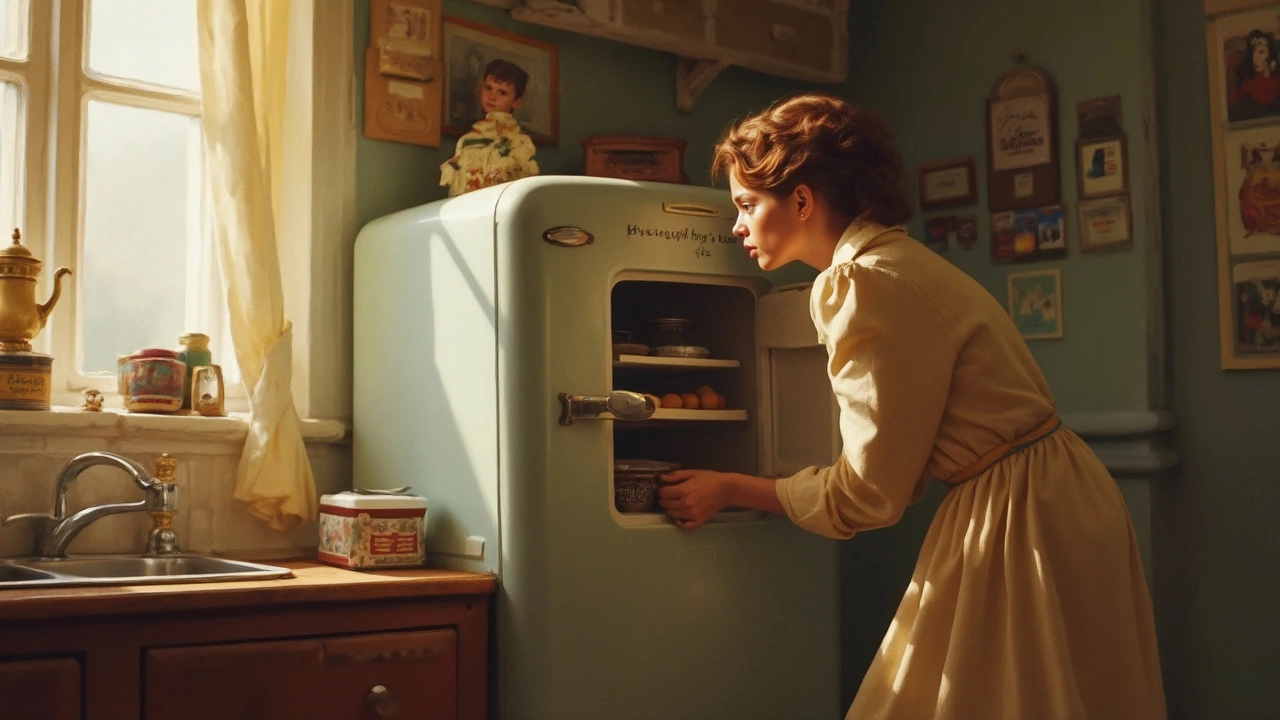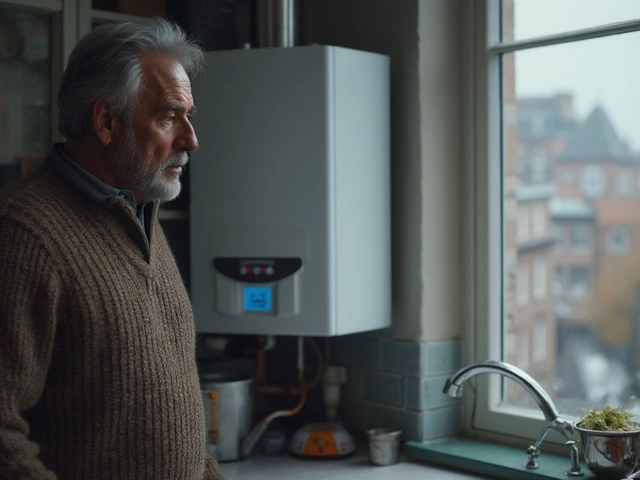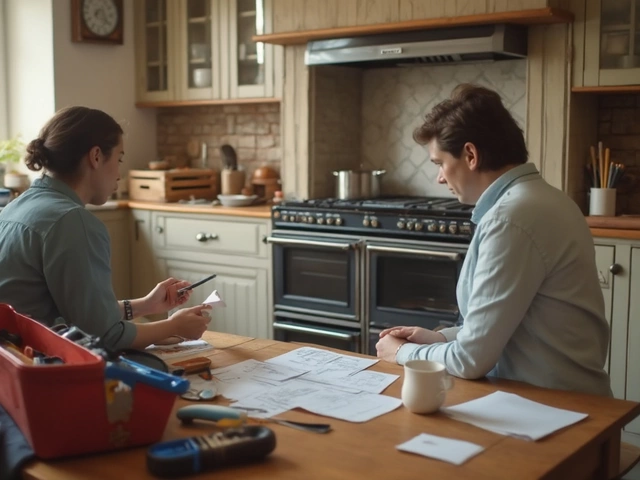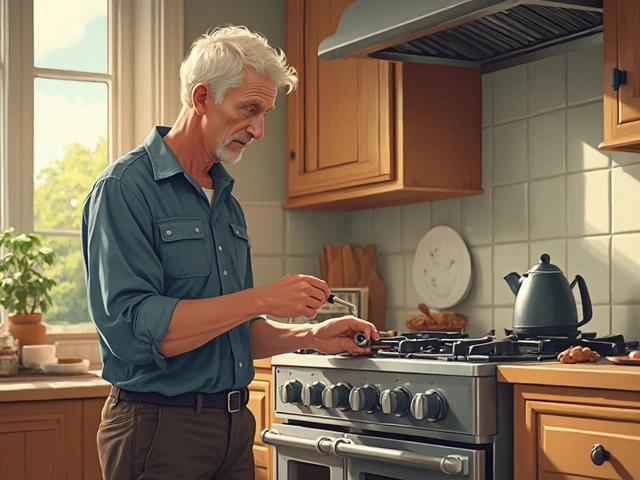If the light inside your fridge is on but nothing’s getting cold, you’re probably frustrated. Don’t worry – most fridge problems are simple to spot and fix. Below you’ll find the most common reasons your refrigerator stops cooling and easy steps you can try before calling a repair expert.
First, check the power. A tripped circuit breaker or a loose plug can make the whole unit quit without any obvious sign. If the fridge still runs but stays warm, the thermostat could be set too high or be faulty. Many people forget to adjust the dial after a power outage, so give it a quick glance.
Next, look at the door seals. A torn or dirty gasket lets warm air creep in, forcing the compressor to work harder. Run a finger around the seal; if you feel air or see visible cracks, clean the edge with warm, soapy water or replace the gasket.
Dust on the condenser coils is another silent culprit. Coils sit at the back or underneath the fridge and need to stay clean for heat to escape. Over a few months, dust builds up and the unit can overheat, causing the cooling cycle to stop.
Inside the fridge, the evaporator fan circulates cold air. If the fan stops, the freezer may stay cold while the fridge stays warm. Listen for a humming sound; silence could mean a blocked fan or a motor issue.
Finally, a defrost timer or heater that’s stuck can cause ice to build up on the evaporator coils. This blocks airflow and makes the fridge feel like a warm box. You’ll often hear a clicking sound as the timer cycles – if it’s stuck, it may need a reset or replacement.
1. Reset the power. Unplug the fridge for two minutes, then plug it back in. This clears any electronic glitches and lets the compressor start fresh.
2. Adjust the thermostat. Set the dial to the middle position (usually 3-4). Wait 24 hours for the temperature to stabilize before tweaking again.
3. Clean the door seals. Warm water and a soft cloth are enough. For tough grime, a mixture of baking soda and water works well. Dry the seal thoroughly before closing the door.
4. Vacuum or brush the condenser coils. A coil cleaning brush or a vacuum with a narrow nozzle does the job. Do this every six months to keep efficiency high.
5. Clear the evaporator fan. Pull the fridge out, locate the fan (usually behind a panel in the freezer), and remove any debris. If the fan blades spin freely but you still hear no noise, the motor may need a check.
6. Defrost manually. If you see a thick layer of ice in the freezer, unplug the fridge and let it melt. Place towels to catch water, then dry and restart the unit.
If none of these steps bring the temperature back to normal, it’s time to call a professional. Issues like a worn compressor, refrigerant leak, or a broken defrost timer require specialist tools and expertise. Bognor Regis Appliance Repair Experts can diagnose the problem quickly and get your fridge humming again.
Keep these troubleshooting tips handy – a few minutes of DIY can save you a costly service call. And remember, regular maintenance (cleaning coils, checking seals) prevents most cooling failures before they start.

Fixing your fridge on your own can be a real money-saver if you know where to start. First, you've got to figure out what's actually wrong before grabbing your toolbox. With some basic tools and a little patience, you might just handle common issues like leaks, noisy operation, or poor cooling effectively. But sometimes, you also need to know when it's time to bring in a professional.

Struggling with a hot water heater that refuses to kick on can be frustrating, especially on chilly days. In this detailed guide, you'll find practical solutions and in-depth explanations to help diagnose and possibly fix some of the most common issues that prevent your hot water heater from functioning. Whether it's a simple power issue or a more complex mechanical fault, this article equips you with the knowledge to tackle the problem. It's time to stop second-guessing and start understanding what's really going on with your heating system.

Is it possible for a hot water heater to last 30 years? Here’s a detailed look at what determines water heater longevity, what rare cases look like, and how you can extend your heater’s life with smart habits.

Thinking about whether to repair an 8-year-old oven? This article digs into the real costs and benefits, from repair bills to how long ovens actually last. You'll get tips on diagnosing simple issues yourself, signs to look for before calling a pro, and how energy efficiency compares between old and new models. See how warranties, brand reputation, and parts availability impact the final call. Get advice that’s practical, straight-up, and doesn’t waste your time.

Extractor fans are crucial for maintaining fresh air and reducing humidity in various parts of a home. When these fans malfunction, it's important to know who to call for repairs. This article guides homeowners on how to find reliable extractor fan repair services. We'll look at why professional help is essential and what to consider when selecting a repair technician.

Wondering if you can fix a faulty gas hob? This article explains what repairs are possible, which issues you can tackle yourself, and when to call in a pro. Get down-to-earth tips on spotting common problems, safety advice, and how regular care can extend your hob’s life. We cover everything from spark ignition troubles to stubborn burners that won’t light. Know what you’re dealing with and avoid expensive mistakes.